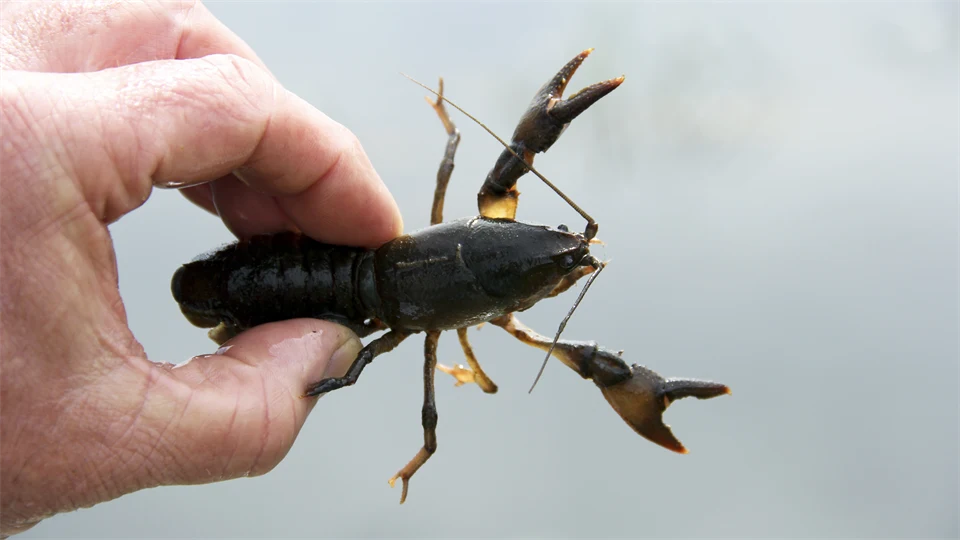Hydrogen and crayfish – an industrial symbiosis with all the prerequisites for success.
Now that hydrogen is to be produced in Alby in Ånge municipality, it is also a perfect opportunity to try growing noble crayfish in the water. If the project succeeds, it should be celebrated – with a crayfish party.
"By the autumn of 2026, when the project ends, we will know if it is possible to grow crayfish in this way. Then we could hopefully have a crayfish party to celebrate our results, says Charlotta Faith-Ell, senior lecturer in environmental science at Mid Sweden University's Department of Natural Sciences, Design and Sustainable Development, NDH, and project manager for the noble crayfish farming at Ljungan.
The project is called Hydrogen and Crayfish, VOK, and is a collaborative project between Mid Sweden University, Ånge Municipality, the Fisheries Conservation Group in Ånge and RES, which is developing the hydrogen plant in Alby. The initiative comes from the Fisheries Conservation Group in Ånge municipality and the aim is to see how the management of water in hydrogen production can be used to grow crayfish.
Can save the noble crayfish
The noble crayfish is critically endangered due to the crayfish plague, which is spread through infected water, among other things. But during hydrogen production, oxygen and heat are formed in purified water, which in turn forms perfect conditions for a noble crayfish to thrive and thrive.
"In crayfish farming, water quality and daylight are central. Oxygen, calcium and temperature are critical factors," says Charlotta Faith-Ell and continues:
"The idea is to investigate whether it is possible to take water from a watercourse, such as Ljungan, and use the surplus heat from hydrogen production to heat the water and thereby kill the crayfish plague spores. In this way, you get a disease-free water that you can grow crayfish in.
The goal of a sustainable industrial symbiosis
The project is funded by Formas and through the municipal collaboration agreement between Mid Sweden University and Ånge municipality. In addition to seeing if noble crayfish can be cultivated, the project is also about investigating how industrial establishments can promote sustainable use of water and how to develop symbiosis between industries and nature conservation efforts.
"VOK is an important project for Ånge Municipality because it coincides with several of our visions, partly because it creates increased ecological sustainability for the industrial investment through its ability to sustainably supply Ljungan with local crayfish. But also because the crayfish have had a high social value for the municipality's inhabitants where they have created local cohesion with their recurring annual fishing. In the long run, it will also be another piece of the puzzle in our sustainable industrial symbiosis," says Tomas Widenfalk, project coordinator for Site Alby Östra and interested party in the project for Ånge Municipality.
Researchers from Luleå University of Technology and Stockholm University also participate in the project.
Collaboration on feasibility studies and research
Collaboration agreement between Mid Sweden University and Ånge Municipality
Contact

